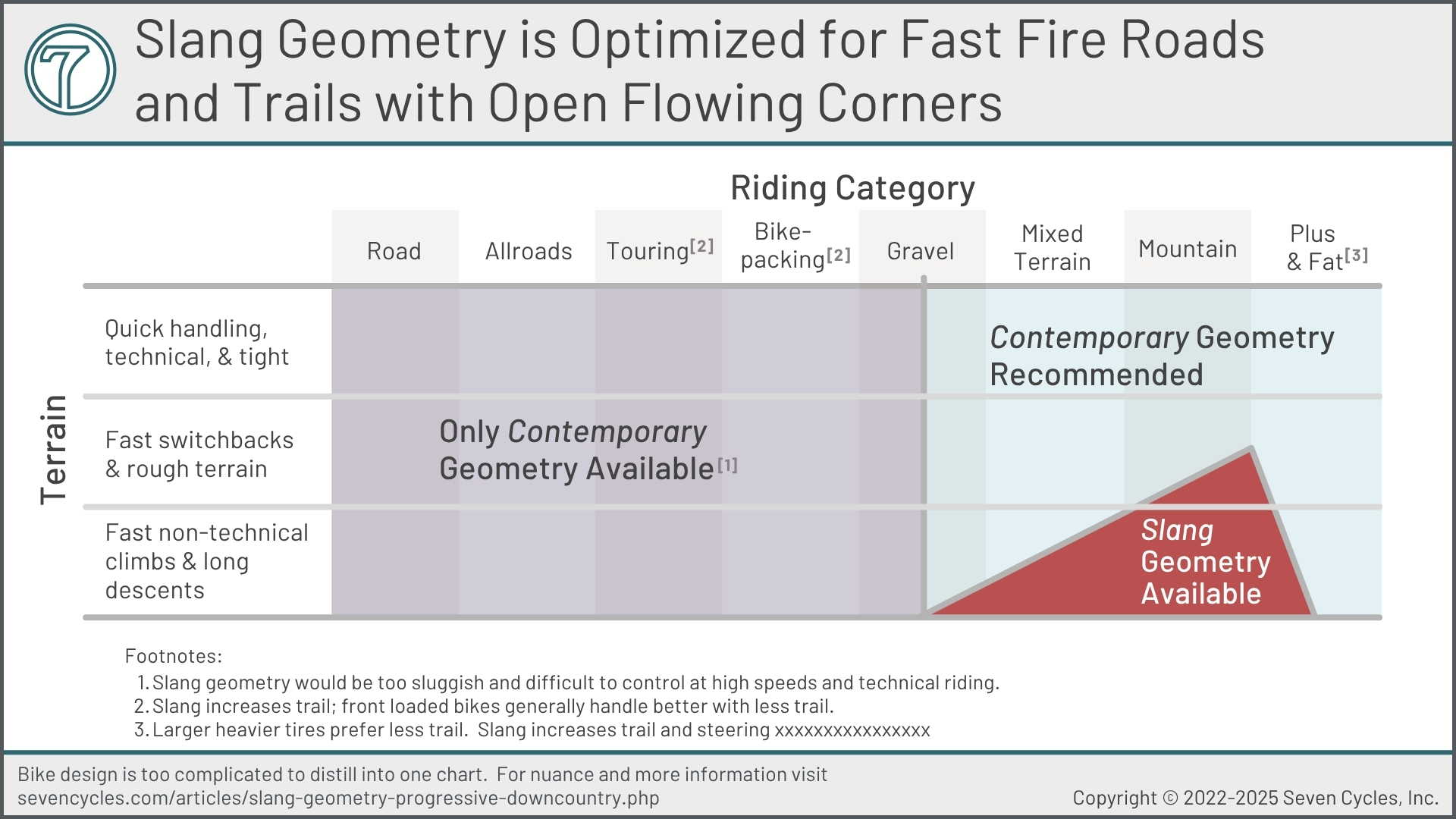Seven's Slang Geometry
When the dirt rides are long and the flow is strong
"Slang" is Seven's term for what some call "progressive" geometry. In the mountain bike world it's called "downcountry." There are other names, too.
Slang is Seven's mashup of SLAck and loNG. We think slack and long is the best simplified description of this kind of geometry.
Seven offer's some of our models in our specialty Slang geometry in addition to our popular Contemporary geometry. When the tires get above 2.2" (56 mm) wide — whether gravel, mountain, or bikepacking — the design is a good candidate for Slang geometry.
Slang gravel-mountain geometry provides a long wheelbase and a low center of gravity; its handling is stable and laid-back. It's well-suited for non-technical climbs and long dirt road descents. (Think, "downcountry" mountain bike geometry.)
Contemporary gravel geometry, comparatively, is quicker and prefers more technical, twisty, and varied terrain. Generally preferred for competition-centric riding. This geometry is similar to popular stock performance carbon bike geometries.
Slang is for mixed terrain and mountain bikes
Figure 1 shows the narrow range where Slang geometry shines. It is not a cure-all.
Slang geometry doesn't work well for road and allroads bikes. The longer and slacker front end, combined with narrow tires and faster average speeds, makes the bike handle sluggishly.
Bikepacking and touring bikes are not good candidates for Slang, even though they tend to have large tires. Slang works best with less weight on the front wheel, whereas bikepacking and touring setups have more weight on the front wheel. Slang increases fork trail, whereas bikes with loaded front ends (bikepacking and touring) tend to benefit from lower trail.
Fat bikes are generally not good candidates for Slang geometry. Even though sand and snow tend to be non-technical, steering through soft surfaces at low speeds requires constant and quick steering adjustments to maintain control. This repeated change in front wheel direction tends to cause the Slang front end geometry to jackknife.

If you're not sure which design is better for your type of riding, choose contemporary rather than Slang. You cannot go wrong with Seven's multipurpose contemporary geometry.
| Attribute | Contemporary (Seven's default/standard geometry) |
Slang (Seven's slack and long specialty geometry) |
|---|---|---|
| Overall Handling | Quicker handling | More stable handling |
| Optimal Terrain & Surface | Technical, rocky, rooty | Gravel, fire roads, flow |
| Climbing | Short, steep, punchy climbs | Long steady climbs |
| Descending | Short, steep, technical descents | Long, fast, flowing switchbacks |
| Speed | Twisty, turny speed | Straight line speed |
| Technical Conditions | Lives for this | Prefers swoopy flowy terrain |
| Frameset Geometry | Contemporary: Shorter wheelbase, steeper head tube angle, classic rider center of gravity. "East Coast" riding. | Seven's Slang: Slacker head tube angle, longer wheelbase, steeper seat tube angle, center of gravity biased toward rear wheel; lighter front end. "West Coast" and "Rocky Mountain" riding. |


